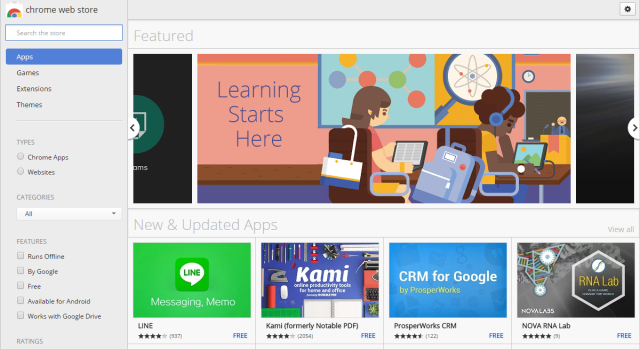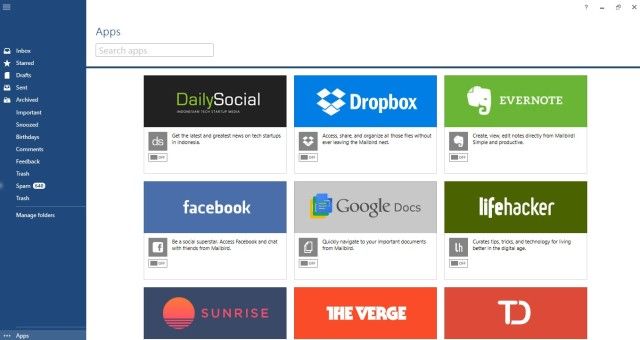A lot has been written about why widespread adoption of webmail services meant you should abandon desktop-based email clients. I wholeheartedly disagree.
A few years ago, providers such as Gmail attracted masses of users with a simpler design, powerful key features, and the promise of having access to your email anywhere. Desktop clients were left behind, but now they are catching up – fast. In fact, for certain groups of people, the advantages of using a desktop client far outweigh those of using a web-based client.
Let's take a closer look at when you should consider using desktop clients.
If You Have Multiple Email Accounts
Lots of people have multiple email addresses; at the very least the majority of people will have a work address and a personal address.
The people with most addresses, however, are usually freelancers. If you're a freelancer, you'll know what I mean. If you're working with several companies on long-term projects at the same time, it's perfectly possible that you'll have an email address with each of them. Add those to your own Gmail address and (probably) an address on your own domain, and you've got yourself a bottleneck.
Although the Gmail smartphone app now does a decent job of allowing you to add multiple addresses, the web-based app feels like it's in desperate need of a graphical and usability overhaul – managing multiple accounts on Gmail is cumbersome. For example, it's too easy to forget changing the "from" address and even if you don't, the email header reveals the original account behind your alias.
Using one of the best free desktop email clients (or even splashing out for a premium account) will make managing all your accounts and keeping them separate considerably more organized, making it less likely that a vital email will slip through unnoticed.
If You Need to Back Up Your Emails Regularly
I can think of lots of reasons why you might want to make backups of your emails on a regular basis.
Probably the most important reason is security. Statistics show that one-in-five email accounts get hacked – adding up to 540 million accounts each year. If you have vital client data, project info, or even important personal emails, you don't want to risk losing access to them.
From a business perspective, it leads to recovery costs, lost opportunities, and potential regulatory breaches. From a personal perspective it can result in identity theft, permanently blocked accounts, or lost contact data. Even a short outage of a free service (such as that which happened to Yahoo in 2013) can wreak havoc – especially if it happens at an inopportune moment.
Gmail finally started offering a way to download all your emails in late 2013, but it's not automatic and it can't be done via the Gmail interface. Instead, you have to log into your Google Account and follow Personal info & privacy > Control your content > Download your data.
Remembering to do this regularly is difficult, and the process of doing it for multiple accounts is time consuming.
Using a desktop client removes the worries and the hassles. Most services offer a way for backups to be automatically scheduled, and you can back up all your accounts at the same time into the same place. Importantly, you are also not limited by file size. If your webmail provider only offers cloud-based backups, those who don't operate a zero-inbox policy could quickly find themselves running out of space.
If You Want a Wider Choice of Add-ons & Plugins
On first glance, this is a bit of a grey area. Although it's true that Chrome offers a huge amount of plugins and browser extensions that'll sync perfectly with Gmail, the most recent data suggests that 60 percent of webmail users are not using Gmail. That's a lot of people with limited productivity.
Gmail's biggest rivals, Yahoo and Outlook, offer some plugins. Other providers barely offer any at all. This is mostly because of commercial/competitive reasons.
A good-quality desktop client can overcome this limitation. For example, Mailbird – one of the most popular desktop clients – offer users an open source app store. This means that there are plugins available for popular productivity tools like iCal and Dropbox, social media providers like Facebook, and an assortment task managers, toolbars, and to-do lists.
Because their store is open source, there is lots of new content being added all the time. Best of all, if you're a skilled programmer and the tool you need isn't available, you can just create it yourself!
If You Want Seriously Good Organizational Tools
Webmail clients are not well-endowed when it comes to organizational tools. Gmail fanatics might point to labels, categories, and stars, while Outlook web users might feel compelled to mention flags – but in truth, they both pale into insignificance when compared to the tools that desktop clients offer.
For example, popular desktop clients providers such as Outlook, Thunderbird, and Postbox offer group filters, flags, categories, priorities, color-coding, follow-up sorting, and lots more.
These capabilities can be extended by using plugins: QuickFolders for Thunderbird will organize your favorite and most-used folders into tabs, while Send Later (also available as browser addon for Gmail) adds the ability to schedule emails to send at a future date.
If You Need Offline Access
Again, Gmail is ahead of some of the other web-based services in this regard, as they offer Gmail Offline through the Chrome Web Store. Users of other services aren't so lucky, and it's probable that a high number of Gmail users haven't implemented the feature anyway.
You may often need access to your email when you're away from an Internet connection; when you're travelling, when your Internet service at home is out of action, or when you're doing a presentation on-the-fly, to name three.
Luckily, all desktop providers will let you access any emails (and corresponding attachments) without an Internet connection, and with the vast majority of services, it requires absolutely no setting up on your part.
It's Not Right for Everyone
I am a big believer in using desktop clients, but I'm not naïve enough to pretend it's a one-size-fits-all solution.
There is a valid argument to keeping all your emails off your physical computer and in an online space (theft), you might lean heavily on a particular app or integration that's not available on desktop clients, or you might love the multi-device nature of webmail.
Nonetheless, if you've not tried using a desktop client recently, you should give it a try, then decide which solution best fits your needs.
Which Providers Do You Use?
If you're already a desktop client user, we'd love to hear what feedback you could offer to non-users; which is the best provider? What are the advantages and disadvantages? What do you miss about webmail?
If you're not a desktop client user, why not? What would they need to do differently for you to make the jump?
Leave us your thoughts, ideas, and opinions in the comments section below.
Image Credits:man embracing by Iryna Rasko via Shutterstock




